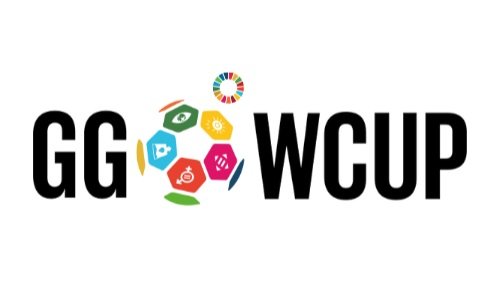Closing the global Play Gap
We commit to closing the Play Gap, advancing gender equality and the UN SDG's in every country we play.
Addressing the Play Gap through the idea and concept GGWCUP and our five sports programs allows women to be physically active and highlights her agenda. The programs are shifting the perception of girls, women and sport.
Girls and women around the world do not have equal access to sport and physical activity. This challenge is influenced by urbanization, technology and cultural values. Older women, marginalized groups, and women with disabilities and chronic diseases, have even fewer opportunities to access safe, affordable and appropriate programmes and places in which to be physically active.
In partnership, we deliver sports and physical activity programs that activate the groundbreaking potential of every girl and woman as well as sports and play with purpose:
Global Goals World Cup (GGWCUP): A world cup for all-women teams promoting a healthy and active world for women. Since 2015 hosted 16 tournaments across five continents in strong partnerships. Our ultimate goal is to promote a more healthy and active lifestyle for women by bringing the GGWCUP to all the 193 countries that adopted the United Nations 17 Global Goals by 2030.
Coach Program: A one-year program designed for female players and educators encouraging gender equality in coaching and focussed on creating teams of the least active women. Certified coaches work to highlight issues such as refugees and displaced people, gender based violence, and homelessness.
GGWCUP School: An eight-week school program designed for 8th graders (and teachers). Students are guided in building and running a sustainable tournament at their own school. The goal is to grow the number of physically active teens given that three out of four do not meet the WHO recommendation. Test launch in Denmark in the spring and the fall of 2021.
Community Clubhouse: Online community with trainings and talks for women all ages and all skill levels. The sessions are created by coaches in the EIR global network. A vibrant and growing player and coach community launched April 2nd 2020.
Tackle Safety: In addition to developing policies that aim to create safe and inclusive spaces for active use, EIR introduces new ideas and products that reduce the devastating high number of sport injuries among teenage girls and women. In 2008 EIR released the first football designed to fit the physicality of female players reducing injuries and maximizing the game experience.
We need active women for a healtier world
Imagine a world of more equal, inclusive and connected communities. Where people live happier, healthier and more fulfilled lives. There’s no quick fix to make this vision a reality. But the evidence reveals a multitude of individual and societal benefits. Here is a very short list:
More than three-quarters of working women feel that sports participation helps enhance their self-image.
Girls active in sports during adolescence and young adulthood are 20 % less likely to get breast cancer later in life.
Through sports, girls and women learn important life skills such as teamwork, leadership and confidence.
When a woman is physically active, there is a 98 % chance that her children will be too.
Physical activity has been associated with improved psychological health by reducing stress level, anxiety and depression.
Physical activity can also provide a vehicle for social integration and equality for women in society.
According to the British Journal of Sports Medicine, doing at least 150 minutes of moderate-intensity physical activity per week, would lead to an increase in Global GDP of 0.15% to 0.24% per year by 2050 which is worth up to US$314-446 billion per year.
The high coast of inactivity
The global cost of physical inactivity to healthcare systems is estimated to be US $ 67 billion per year according to The Lancet in addition to the billions of dollars attributable to lost productivity. These staggering amounts exclude the costs associated with mental health and musculoskeletal conditions.
Cardiovascular diseases account for one-third of deaths among women around the world and half of all deaths in women over 50 years old in developing countries.
Diabetes affects more than 70 million women in the world and its prevalence is projected to double by 2025.
Globally, the rates of depression for women are reported to be double that of men.
Globally, 1 in 4 adults do not meet the global recommended levels of physical activity.
Up to 5 million deaths a year could be averted if the global population was more active.
More than 80 % of the world's adolescent population is insufficiently physically active.
On average, sports coverage in national and local print media dedicated to women’s sport are below 5 %.
Sports is key to achieving the Global Goals
The Global Goals (SDGs) are a blueprint to achieve a better and more sustainable future for all by 2030.
The GGWCUP shines a light on each of the 17 Global Goals adopted by 193 countries. Of note, the WHO Global Action Plan states that when we invest in sports and physical activity programs we contribute to achieving the Global Goals.
